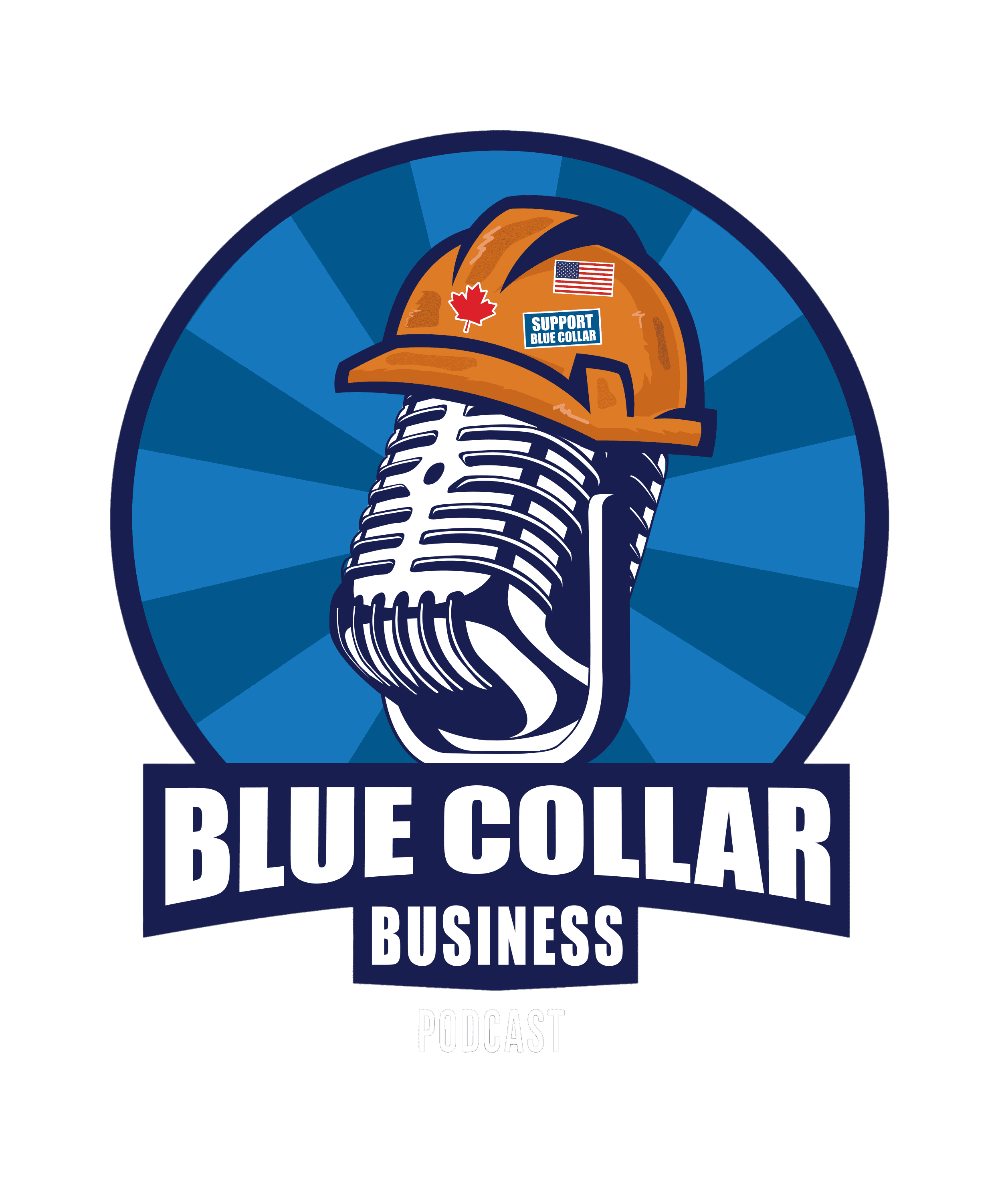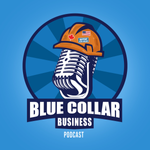The most successful construction business owners know a secret that others learn the hard way: understanding cash flow is the difference between thriving and barely surviving. In this powerful conversation with Scott Peper, CEO of Mobilization Funding, we unpack why so many blue-collar businesses show healthy profits on paper but struggle with empty bank accounts in reality.
Scott brings thirteen years of experience financing specialty contractors and analyzing thousands of construction cash flows to explain why the construction industry faces uniquely challenging cash flow cycles. He walks us through the perfect storm that occurs when expenses accelerate while payments drag, and delivers a masterclass on the critical difference between margin and markup that every contractor must understand.
You'll discover why adding a 10% overhead allowance and 10% profit can actually leave you with negative cash flow during project execution once retainage is factored in. We also explore why commercial construction projects create such intense cash flow pressure and how to prepare your business before taking that next big job.
The heart of our discussion focuses on practical solutions: finding industry-specific financial professionals, implementing proper reporting systems, building redundancy in your crews, and most importantly, giving yourself grace during the growth process. Scott shares the profound advice to "treat your business like a baby," prioritizing its needs and protecting its growth without expecting immediate returns.
Whether you're just starting out or working to scale your blue-collar business, this episode provides the framework and information you need to make better financial decisions. Stop guessing about your numbers and start building the foundation that will support your business for years to come.
Ready to gain control of your cash flow and transform your business? Hit subscribe, share this episode with a fellow contractor who needs this wisdom, and implement these strategies to build a financially sound future.
Blue Collar Performance Marketing
Click the link above for a free marketing audit with insights to boost your blue collar business!
PodcastVideos.com
Put your show in front of audiences that care with PodcastVideos.com's wide range of podcasts!
Disclaimer: This post contains affiliate links. If you make a purchase, I may receive a commission at no extra cost to you.
Follow and stay connected:
Never miss an update—follow, subscribe, and join the conversation!
More About this Episode
Taming the Cash Flow Beast in Construction
If you’ve ever stood on a job site at 6 a.m. thinking about payroll you can’t cover, materials you can’t order, and retainage you can’t touch for months, you know exactly why cash flow is the monster hiding in every construction business.
This isn’t about your hustle, skill, or how well you know your trade. It’s about timing, scale, and the harsh truth that commercial construction has one of the toughest cash flow cycles in any industry.
That’s why I want to break this down the way Scott Peper, CEO of Mobilization Funding, and I discussed it: real, raw, and brutally honest. Because if you don’t get this right, you don’t have a business.
What Cash Flow Really Means in Construction
Let’s clear this up first. Cash flow isn’t profit. You can show a profit on paper at tax time and still not have enough cash in the bank to cover tomorrow’s bills.
Cash flow is the gap between when you pay out money and when you actually get it back.
In construction, that gap is built in by design. You pay your crew every Friday. You buy materials before you even start. But you might wait 30, 60, 90 days to get paid, and that’s if you don’t have retainage holding 10% back until the end of the job.
It’s not bad luck. It’s the system.
Why Cash Flow Hurts So Bad
Construction cash flow is uniquely brutal for a few reasons:
- Big dollars, big riskYou’re not buying $50 widgets. You’re buying hundreds of thousands in concrete, steel, pipe, and equipment rentals. Suppliers might float you $20,000 on 30-day terms, but $200,000? That’s a different story.
- Timing mismatchesExpenses hit immediately. Payroll is weekly. Materials have tight terms. Meanwhile, invoicing happens monthly, and payment can take even longer.
- RetainageThat 5–10% holdback is your profit on paper, but untouchable cash until the project is finished and sometimes well beyond.
- Labor overrunsLabor is predictable until it isn’t. Without tracking time against tasks or phases, you won’t catch overruns until you’re in the red.
- Unpredictable conditionsWeather, site delays, change orders. Unlike manufacturing in a controlled environment, you’re outside in the dirt with countless variables.
Markup vs. Margin: The Silent Profit Killer
This is one of the most common ways contractors sink themselves.
Markup is what you add to costs. Margin is the percentage of the sale price you keep.
If you add 10% for overhead and 10% for profit to $800,000 in costs, you’re not getting 20% margin.
Example:
- Costs: $800,000
- Add $80,000 overhead and $80,000 profit = $960,000 bid
But $160,000 is only ~16.7% of $960,000, not 20%.
Now subtract 10% retainage ($96,000), which you won’t see until the end. Your available cash for operations shrinks even further.
That’s how you can “profit” on paper but still go broke running the job.
Why Residential and Service Work Can Be Your Lifeline
One strategy smart contractors use is to balance commercial work with service or residential jobs.
- Homeowners pay on completion.
- Service work invoices faster.
- Those cash flows can fund overhead: insurance, staff salaries, office costs.
Without that cushion, you’re betting everything on commercial jobs that pay slowly and unpredictably.
If you’re nodding along, here’s where you start to fix it.
- Get honest, accurate financials
- Real job costing
- Labor tracked to tasks or phases
- Monthly P&L reviews not just at tax time
- Use construction-specific accounting
- Don’t rely on generalists
- Look for CPAs or bookkeepers who understand
- Retainage
- Cost-to-complete forecasting
- Fractional CFOs can be surprisingly affordable
- Track labor in real time
- Use apps that track location and job codes
- Review weekly reports
- Catch overruns before they sink you
- Bid with real numbers
- Base estimates on historical production
- Factor in true overhead
- Don’t guess, and don’t copy your competitor’s guess
- Plan for retainage
- Don’t count it as cash you can use
- Structure working capital plans around progress payments minus retainage
When Should You Actually Scale?
This is one of the most important decisions you’ll make.
Think in five-year timelines.
- Year 1: Build the foundation. Don’t worry about big revenue yet.
- Year 2: Get consistent. Maybe 20% of your ultimate goal.
- Year 3: Scale carefully with solid systems.
- Years 4–5: Double down when you’re truly ready.
Don’t try to scale chaos.
Checklist Before You Hit the Gas
- Your jobs finish close to budget.
- You have at least two reliable crews or managers (because “when you have one, you have none”).
- You’re getting clear monthly financial reports.
- You have enough working capital or financing to float the bigger jobs.
- You’re prepared to say no to bad work that doesn’t fit.
Why Financing Exists (But Won’t Save You from Yourself)
Even with perfect systems, big jobs often need upfront capital.
Mobilization Funding exists for that reason: to help contractors cover the gap between starting a job and getting paid. But financing isn’t a silver bullet.
If you’re bidding too low, ignoring labor overruns, or failing to plan for retainage, a loan just speeds up the crash. If you’re struggling with cash flow, you’re not broken or lazy. You’re in one of the hardest industries there is.
Give yourself some grace. But don’t make excuses.
You can fix this.
Your Blueprint
- Get the right data.
- Hire the right people—even fractional help.
- Build the right systems.
- Plan for retainage.
- Scale deliberately.
Construction is not an easy business. But when you get cash flow right, everything else gets easier. You go from living job to job to confidently bidding bigger projects, growing at your pace, and sleeping better at night.
It’s not about being the cheapest. It’s about being smart, disciplined, and prepared. If you’re serious about building something that lasts, start by getting your cash flow under control. That’s when you stop surviving and start building the business you set out to create.



Member discussion: